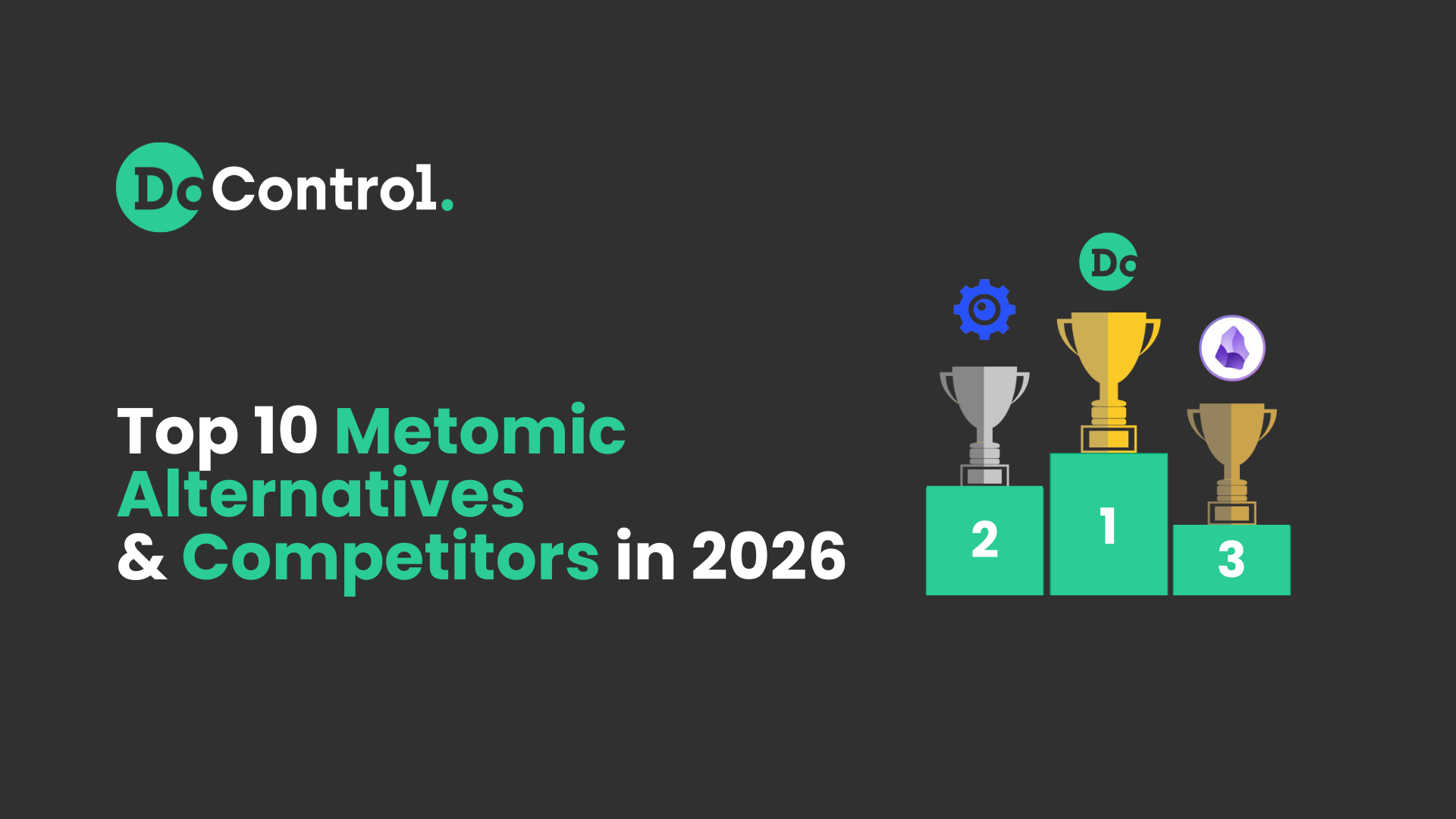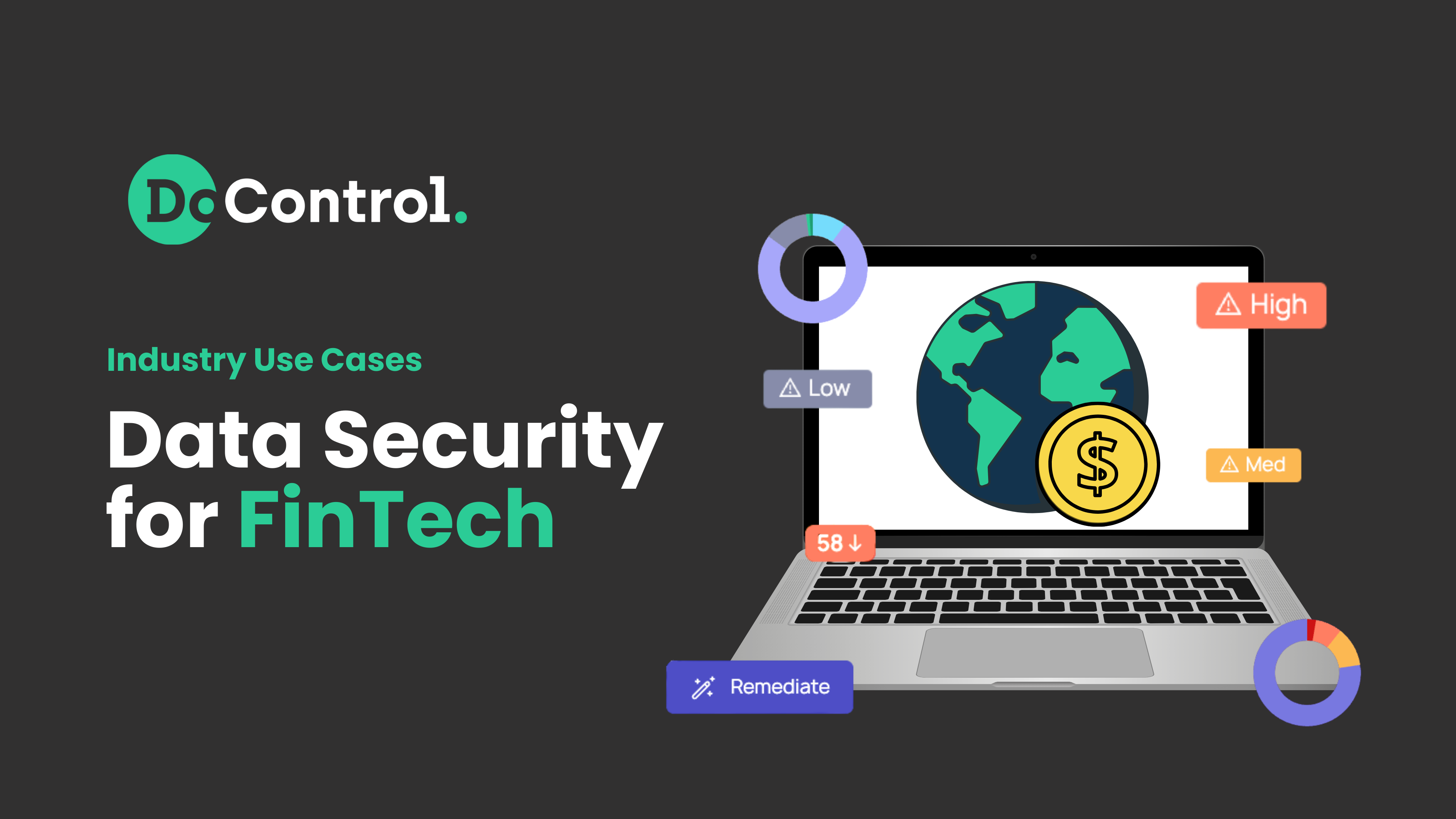
Metomic has quickly established itself as an emerging player in the SaaS security and data protection space, earning recognition for its ease of use, fast deployment, and strong return on investment.
Metomic is an API-based data security and DLP-adjacent platform built for SaaS and cloud environments, helping companies automatically discover, classify, and protect sensitive data within their business applications.
One of Metomic’s differentiators is its “human firewall” approach - which is a feature that empowers employees to self-remediate risks directly within their workflows, reducing burden on security teams while maintaining productivity.
This unique self-remediation approach and other facets of their product showcase how Metomic has positioned itself as an agile, accessible, and forward-looking solution in the evolving SaaS DLP market.
While Metomic delivers meaningful visibility into where sensitive data lives, how its used, and how it’s shared, its approach has some constraints that limit its effectiveness for larger, complex enterprises - which leads organizations to layer other existing solutions on top of it and seek out other vendors:
- Metomic doesn’t provide bulk remediation or real-time response capabilities. As a result, organizations often experience latency when addressing exposure events at scale - which means exposure and incidents can slip through the cracks.
- Metomic’s focus leans more toward content-level DLP scanning within SaaS and AI tools, rather than broader SaaS security coverage; Their DLP capabilities don’t extend deeply into areas like data access governance, shadow IT/AI visibility, or identity threat detection and response (ITDR).
- Many security teams also report high false-positive rates with their data scanning and limited integration depth; further highlighting Metomic’s constrained remediation capabilities and lack of user-behavior context to enhance DLP accuracy.
As a result, enterprises seeking holistic data security coverage and strong remediation capabilities may find Metomic’s scope too narrow and look for other solutions to complement or replace it.
It's important to note that one data security solution isn’t going to solve ALL of your company's needs. The market is fragmented, and one solution or vendor won’t be the silver bullet to solving the SaaS security problem in 2026.
In the following sections, we’ll explore the top 10 Metomic alternatives and competitors that help organizations secure their SaaS environments with context, precision, and scalability.
1) DoControl
DoControl provides a comprehensive, context-rich approach to SaaS DLP and SaaS Security, delivering deep coverage across all five pillars. It excels in Data Access Governance, DLP, Shadow AI, and ITDR, making it a strong fit for organizations looking to reduce sensitive data exposure with precision and scale.
Focus Area(s): DLP, Data Access Governance, Shadow Apps, Shadow AI, ITDR
Top Customers: Colgate-Palmolive, Snap Inc., Databricks, Sanmina, Datadog
Pros:
- Contextual visibility combining SaaS data, user behavior from HRIS/IdP systems, and content scanning.
- Granular and scalable remediation for both historical and real-time exposure through flexible, automated workflows.
- Real-time, scalable data architecture designed for large enterprise environments.
Cons:
- Misconfiguration coverage is growing but currently limited.
- Compliance framework support is still expanding.
- No browser extension analysis within the Shadow AI/Apps module.
2) AppOmni
AppOmni specializes in SaaS posture and configuration management, with a strong focus on securing application settings and third-party integrations. It’s widely adopted by large enterprises for reducing configuration drift.
Focus Area(s): SSPM at depth, configuration drift control
Top Customers: Sprinkler, DLA Piper, Rightmove, Fanduel, BlueOcean
Pros:
- Robust SaaS configuration and posture controls
- Extensive integration list with core SaaS platforms (e.g., Salesforce, M365)
- Strong reputation in the enterprise market
Cons:
- Limited visibility into user activity and data flow
- Lacks detection/response capabilities
- Offers NO remediation for exposed data
3) Obsidian Security
Obsidian fuses posture management with analytics. Obsidian merges SSPM with UEBA (User & Entity Behavior Analytics) to detect threats within SaaS platforms. It acts as a security intelligence layer, especially around insider risk.
Focus Area(s): Misconfigurations, Shadow Apps, Insider Risk Management
Top Customers: Seagate, Databricks, PureStorage, Upwork, Snowflake
Pros:
- Effective insider threat detection via UEBA
- Solid misconfiguration detection across a wide app range
- Behavioral visibility across accounts and apps
Cons:
- Limited remediation capabilities
- Weak data inventory and shadow app insights
- Less focus on posture/configuration enforcement
4) Netskope DLP
Netskope’s SSE offering is strong, and its agent-based CASB approach provides robust visibility and control.
Focus Areas(s): DLP, Security Service Edge (SSE) / SASE
Top Customers: Triple A, Ross Stores, Yamaha, Sainsbury’s, JLL
Pros:
- Deep classifier engine that covers SaaS, Cloud, and Endpoint
- Agent (inlined) and API options to cover both scenarios and connect the dots between the two
- Can be bundled in with broader Netskope offering
Cons:
- Very difficult to setup and maintain - high cost of ownership
- API option is spotty and data is often inaccurate
- Agent based approach is often too rigid for scaling organizations
- Remediation options within SaaS are limited
- Limited user context for HRIS / IdP tools - high false-positives
5) Zscaler
Zscaler isn’t a DLP or SSPM vendor per se, but it often enters the conversation for SaaS access security - governing who can reach what and how it is inspected.
Focus Area(s): Zero Trust access, inline traffic inspection, threat prevention
Top Customers: Protegrity, MGM Resorts International, Micron Technology, Amplifon
Pros
- Robust inline controls, session security, and policy enforcement at scale.
- Complements app-level posture tools with access-layer protections.
- Strength in global footprint and enterprise-grade operations.
Cons
- Not a replacement for app-native configuration hardening or data governance.
- Needs careful integration with IdP and app-level tooling.
- Policy design is crucial to avoid friction for developers and business users.
6) Microsoft Defender (Purview DLP)
For Microsoft-centric shops, this option offers SaaS discovery, control, and DLP, with Purview providing unified data governance and DLP across workloads.
Focus Areas(s): DLP
Top Customers: Not available to the public
Pros:
- Strong AI classification and labeling engine for MSFT data
- Decent workflow engine to enforce sharing policy controls
- Cost effective as comes in Microsoft E5 package
Cons:
- High cost of ownership as it’s very difficult to setup and maintain
- No coverage beyond Microsoft - requires additional tooling
- No ability to remediate historical data exposure
- No user context for HRIS / IdP tools - high false-positives
7) Nightfall
Nightfall AI has established itself in the data loss prevention (DLP) market, offering a cloud-native, API-driven platform built to protect sensitive data across SaaS, cloud, email, and generative AI applications.
Focus Areas: DLP
Key Customers: Snyk, Klaviyo, Northone, CapitalRx
Pros:
- AI-powered discovery and detection
- Offers a wide range of SaaS and cloud apps
- API based architecture aids in quick deployment
Cons:
- User behavior analytics, contextual identity threat detection are less mature
- High false positive rate with data scanning and risk reporting
- Limited bulk remediation capabilities
8) Symantec
Symantec, owned by Broadcom, is an emerging solution that aims to deliver data-centric security.
Focus Areas: DLP
Key Customers: GoDaddy, EPAM Systems, SAP, Accenture, and Cognizant
Pros:
- Mature DLP platform that has advanced content inspection with complementary CASB capabilities
- Strong for organizations with regulatory needs - HIPAA, FEDRAMP
- Coverage across endpoint, Cloud, Email, and some SaaS
Cons:
- No ZTNA or SASE capabilities
- Limited SaaS and Cloud abilities and almost no remediation - high-false positive rate
- Fully agent-based with very complex deployment and maintenance
9) Reco AI
Reco positions around AI-driven context for SaaS risk. While it's early in other areas, it has carved a niche around secure app configurations.
Focus Area(s): SaaS discovery, Misconfigurations, ITDR
Top Customers: Wellstar Health System, BigID, CSK, Ruby Life, BHG Financial
Pros:
- Broad app support for Misconfiguration coverage
- Automated custom app onboarding
- Behavior-based risk scoring
Cons:
- No remediation capabilities
- Limited feature set outside Misconfigurations
- No DLP, DAG, or Shadow AI capabilities
10) Varonis
Varonis is historically a data security leader (on-prem and cloud) with expanding SaaS coverage. Since extending into the SaaS world, they focus on permissions, access, and entitlements within apps like M365 and Salesforce.
Focus Area(s): Endpoint DLP
Top Customers: KMPT, TPMG, Penguin Random House, PizzaExpress, Zurich Insurance
Pros:
- Powerful visibility into file access and entitlements
- Mature platform with proven enterprise adoption
- Suitable for hybrid IT environments
Cons:
- Legacy UI/UX and deployment complexity
- High false-positive rate due to lack of context
- Expensive with limited coverage across modern SaaS
Summary
While Metomic delivers real value in helping organizations identify and classify sensitive data within SaaS environments, its narrower focus and limited remediation capabilities highlight the complexity of modern SaaS security - and show the need for multiple solutions that complement each other in a holistic security program.
The challenges of data protection in SaaS ecosystems go far beyond content-level DLP - encompassing access governance, insider risk, identity threat detection, and compliance alignment.
As we’ve mentioned, no single vendor can perfectly address every facet of this fragmented, complex landscape that is SaaS security.
That said, there’s no silver bullet when it comes to SaaS and data security. Each platform brings its own balance of coverage, depth, context, and scalability - and most organizations ultimately find success through a layered, best-of-breed approach.
The goal isn’t to find the one singular flawless tool (because that doesn’t exist!), but rather, a partner that scales with your security maturity and adapts to tomorrow’s threats as seamlessly as it addresses today’s.
DoControl embodies this philosophy. With comprehensive coverage across SaaS DLP, data access governance, Shadow AI, Shadow Apps, identity threat detection and response (ITDR), and misconfiguration management, DoControl unifies visibility, automation, and remediation under one platform.
For organizations seeking a scalable, context-driven solution that meets the demands of modern SaaS ecosystems, DoControl stands apart as a partner built for the realities of today - and the challenges of tomorrow.



